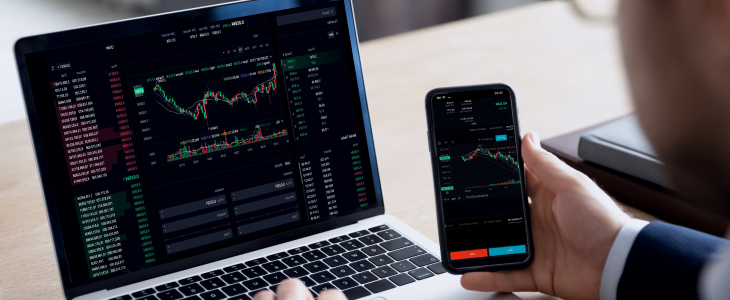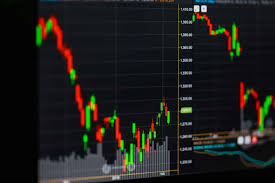
Welcome to the world of Forex trading! If you’re interested in learn forex trading Trading Broker ZA, you’ve come to the right place. Forex trading, or foreign exchange trading, is the act of buying and selling currencies in the global market. It’s one of the largest and most liquid financial markets in the world, with trillions of dollars traded every day. In this article, we’ll dive into the essentials of forex trading, covering everything from basic concepts to strategies that can help you succeed.
Understanding Forex Market Basics
The Forex market operates 24 hours a day, five days a week, allowing traders to engage in currency trading at any time. Unlike traditional stock markets, the Forex market is decentralized, meaning there’s no central exchange. Instead, trading takes place over-the-counter (OTC) through a network of banks, financial institutions, and individual traders.
Currency Pairs
In Forex trading, currencies are traded in pairs. Each pair consists of two currencies; the first currency is known as the base currency, and the second is the quote currency. For instance, in the currency pair EUR/USD, the Euro is the base currency and the US Dollar is the quote currency. The exchange rate indicates how much of the quote currency is needed to purchase one unit of the base currency.
The Major Currency Pairs
Forex trading typically revolves around a set of major currency pairs, which include:
- EUR/USD (Euro/US Dollar)
- USD/JPY (US Dollar/Japanese Yen)
- GBP/USD (British Pound/US Dollar)
- USD/CHF (US Dollar/Swiss Franc)
- AUD/USD (Australian Dollar/US Dollar)
- USD/CAD (US Dollar/Canadian Dollar)
- NZD/USD (New Zealand Dollar/US Dollar)
Getting Started with Forex Trading
To begin your journey in Forex trading, you’ll need to follow a series of steps to ensure you’re well-prepared to take on this fast-paced market.

1. Educate Yourself
The first step is to educate yourself on the fundamentals of Forex trading. Numerous online resources, courses, and books are available to help you learn the basics. Understanding the terminology, market structure, and trading mechanisms is essential for building a strong foundation.
2. Choose a Reliable Forex Broker
Selecting the right broker is crucial to your trading success. A reputable broker provides access to trading platforms, competitive spreads, and thorough customer support. It’s essential to do your research and consider factors such as regulation, trading fees, and available trading tools.
3. Open a Trading Account
Once you’ve chosen a broker, you’ll need to open a trading account. Most brokers offer different types of accounts catering to beginners and experienced traders. You can start with a demo account, allowing you to practice trading without risking real money.
Developing a Trading Strategy
Your trading strategy is integral to your success in Forex trading. A well-defined approach will guide your decisions, helping you to minimize risks and maximize potential returns. Here are some popular trading strategies:
1. Scalping
Scalping involves making quick trades to profit from small price movements. Scalpers typically hold trades for just a few minutes and execute numerous trades throughout the day.
2. Day Trading
Day traders open and close their positions within a single trading day, avoiding overnight risks. This strategy requires quick decision-making and the ability to monitor multiple charts and indicators continuously.
3. Swing Trading
Swing traders aim to capitalize on price swings over several days or weeks. This approach allows for a more relaxed trading pace while still attempting to capture larger market movements.
Risk Management
Risk management is a crucial aspect of Forex trading. Implementing sound risk management strategies can protect your capital and help you stay in the game longer.
1. Use Stop-Loss Orders
Setting stop-loss orders can help limit potential losses on a trade. By specifying the maximum amount you’re willing to lose, you can exit a position before it becomes too detrimental to your overall trading capital.
2. Position Sizing
Determining the appropriate position size for each trade is essential. This involves calculating the potential loss based on your stop-loss order and adjusting your trading size accordingly to ensure you never risk more than a predetermined percentage of your trading capital.
3. Diversification
Diversifying your trades can minimize risk. Instead of concentrating solely on one currency pair, consider spreading your investments across multiple pairs to mitigate potential losses.
Continuous Learning and Adaptation
The Forex market is ever-evolving, influenced by various factors such as economic indicators, geopolitical events, and market sentiment. As a trader, it’s vital to stay informed and adapt your strategies accordingly. Continuous learning through webinars, articles, and market analysis will keep you ahead of the curve.
Conclusion
Forex trading can be both exciting and profitable, but it’s not without its challenges. By educating yourself, developing a solid trading strategy, and implementing effective risk management techniques, you can navigate this dynamic market with confidence. Remember, practice makes perfect, so take your time to hone your skills and approach the Forex market with patience and discipline. Happy trading!
